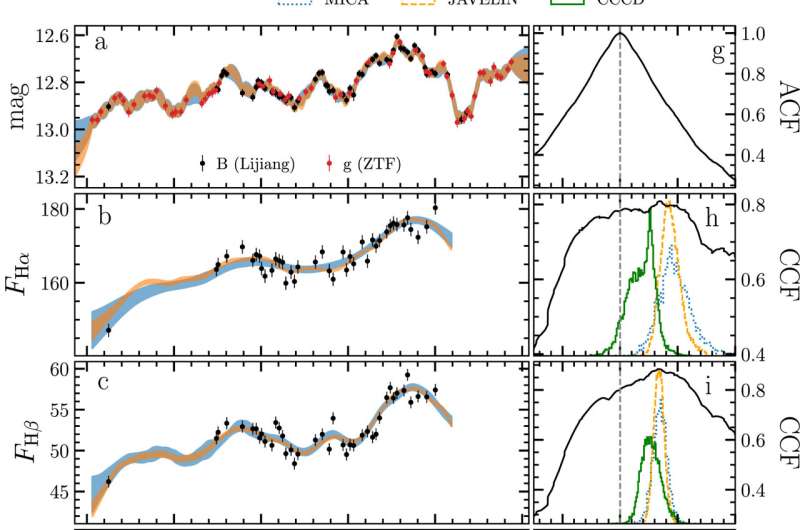Researchers study active galactic nucleus during its outburst phase

Dr. Li Shasha and Dr. Feng Haicheng from the Yunnan Observatories of the Chinese Academy of Sciences and their collaborators found evidence for the kinematic evolution of the broad-line region of active galactic nuclei.
Their findings were published in The Astrophysical Journal on August 31.
Using the 2.4-m telescope at Lijiang Observatory, the researchers conducted a seven-month photometric and spectroscopic monitoring program during 2020–2021 to investigate the geometry and kinematics of the broad-line region and measure the mass of the supermassive black hole in changing-look active galactic nucleus NGC 4151.
Broad emission lines, prominent features in active galactic nuclei, are generally believed to emit from the broad-line region. The gas in the broad-line region is very close to the supermassive black hole, so it is important to study the properties of the supermassive black hole and active galactic nucleus center. However, the details of the kinematics and geometry of the broad-line region are still not well understood.
Reverberation mapping is an effective way of investigating the broad-line region and the supermassive black hole. "We can investigate the kinematic evolution of a broad-line region through multiple reverberation mapping observations," said Dr. Li.
After a seven-month monitoring of NGC 4151, the researchers obtained the time lags of Hα, Hβ, Hγ, He I and He II, which indicated a stratified structure in the broad-line region. Combining the velocity width and time lag of each emission line, they also derived that the mass of supermassive black hole is about 40 million solar masses, which is consistent with the results of other methods.
Furthermore, velocity-resolved measurement showed a virial and inflow coexistence broad-line region during the observations. The researchers analyzed the historical light curve and compared the observations with previous results. They found that the kinematics of the broad-line region have been changing for nearly 30 years.
These findings on an extremely variable active galactic nucleus indicate that the evolutionary kinematics of a broad-line region should relate to the accretion rate of supermassive black holes.
More information: Sha-Sha Li et al, Velocity-resolved Reverberation Mapping of Changing-look Active Galactic Nucleus NGC 4151 during Outburst Stage: Evidence for Kinematics Evolution of Broad-line Region, The Astrophysical Journal (2022). DOI: 10.3847/1538-4357/ac8745
Journal information: Astrophysical Journal
Provided by Chinese Academy of Sciences





















